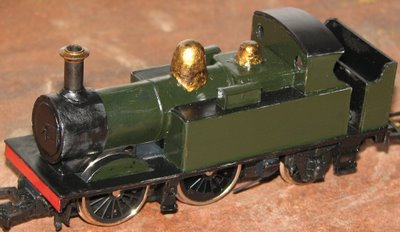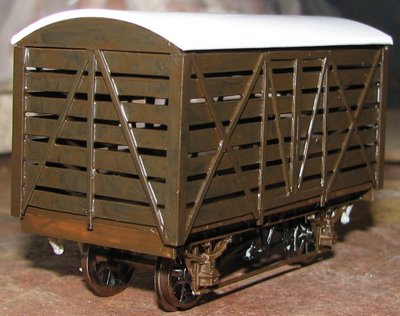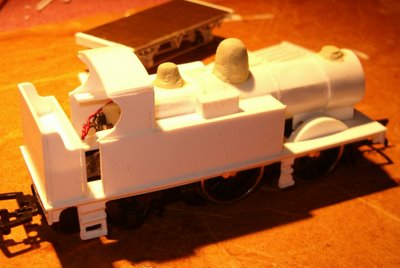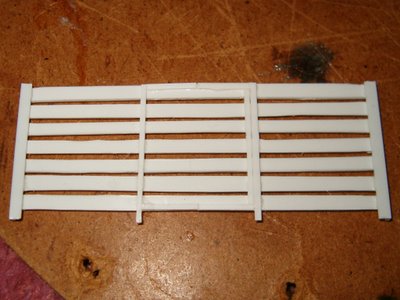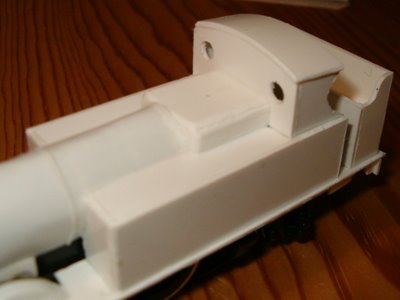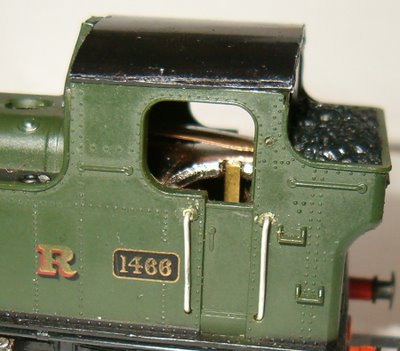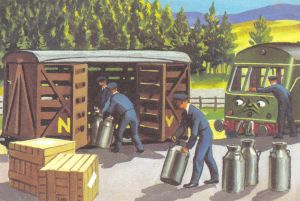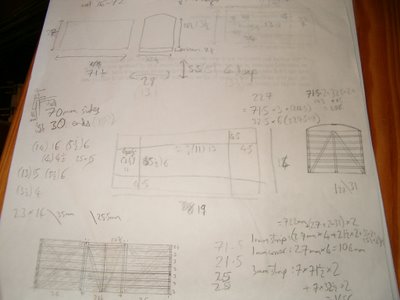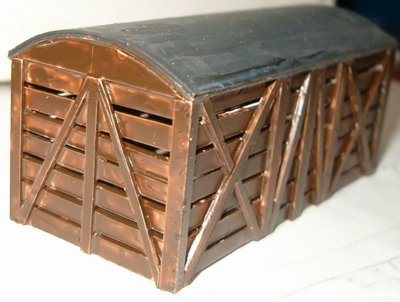42xx part one
Unlike the 517, I don't have the benefit of a ready-made chassis on this one. I plan to build my own chassis, but I've not yet got hold of the key bits I need (a motor, gears, and a set of driving wheels), so I decided to do things backwards and build the body first. I'll probably regret this later, but it's only plastic so as I found with the milk wagon, I can always do another (better) one if it doesn't work out.
I wasn't happy with the boiler on the 517; I made it from two rolls of 20 thou plasticard, but it ended up with a lot of folds rather than smooth curves. For the 42xx, I used a single layer of 20 thou cut to the dimensions of the actual boiler, then two layers of 10 thou wrapped around the outside. This worked a bit better: the 10 thou is easier to bend, and can just be wrapped around the inner layer and glued. I then held it in place with a rubber band, reckoning that this would tend to force it into a circle, as opposed to clamping it which would try to make various bits flat and the edges more sharply bent. This was a partial success but the boiler still isn't perfect.
The 42xx boiler has one other difficulty compared with the 517: it's not a simple cylinder, rather the back half is tapered. Time for some 'O' level geometry! I won't reproduce the maths here (unless anyone is interested - if you are, please ask, it's not that hard). I drew the shape required on paper with a ruler and pencil, then cut it out and tried it. Then I pritt-sticked it to the plasticard (20 thou), and cut it out using scissors. (Incidentally, for 20 and 30 thou, scissors work far better than a knife; at 10 thou the knife cuts so easily it's not worth it, and at 40 or more the scissors won't work at all). A bit of glue, a while held in clamps, and I had a lovely taper boiler. For the outer layers, I just extended the arc that I had used for the inner layer. This probably isn't geometrically correct, but it worked nicely.
Next I built the tanks, starting with the tank front. I used compasses to trace the circular hole for the boiler, which worked very well; I used the cut-out circle to trace the curve of the smokebox saddle as well. The tanks have sloping tops. I had originally planned to build them from 60 thou plasticard (I just bought some), but ended up doing it as two layers of 30. I cut the outside using a scale drawing stuck on and scissors to cut out, plus a knife and file for the rounded corners. The inner layer was slightly shorter, the idea being that the tank top would fit on top of the inner layer and inside the outer. Cutting the top to fit the boiler wasn't easy (or particularly accurately done), but when I had, it slotted in place very nicely.
The only other difficulty on this part was a curved plate at the top of the smokebox saddle; I made this by sticking two squares of 10 thou plasticard to the bottom of the smokebox (and holding them in place with a rubber band).
More later, including pictures; I took some at this point but accidentally deleted them :(



